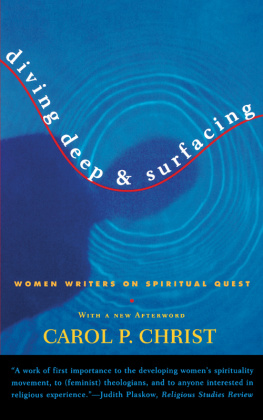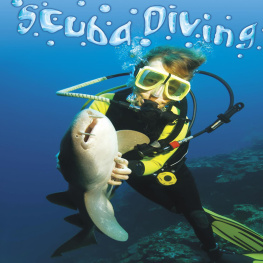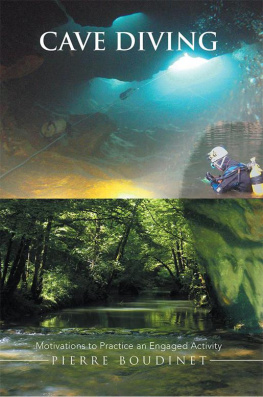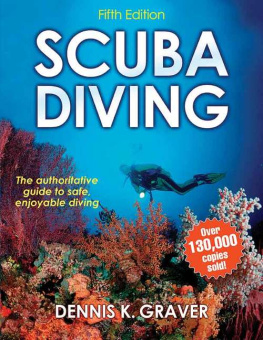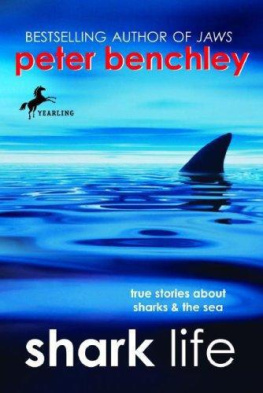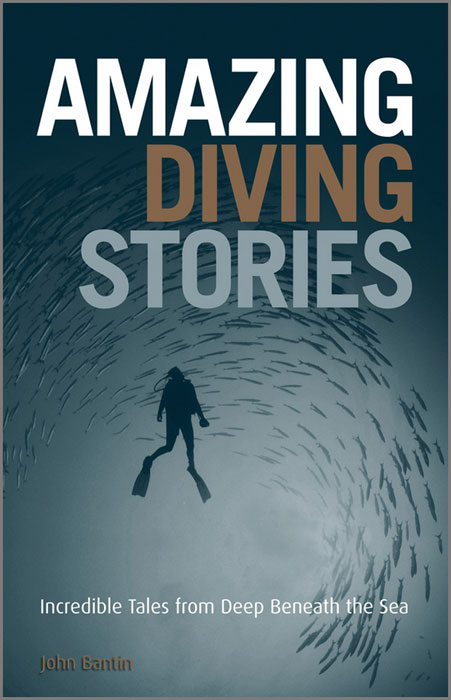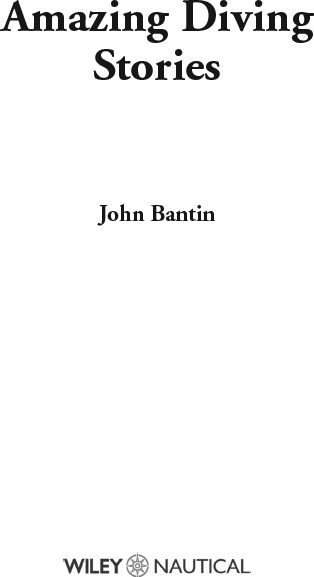This edition first published 2012
2012 John Bantin
Registered office
John Wiley & Sons Ltd, The Atrium, Southern Gate, Chichester, West Sussex, PO19 8SQ, United Kingdom
For details of our global editorial offices, for customer services and for information about how to apply for permission to reuse the copyright material in this book please see our website at www.wiley.com .
The right of the author to be identified as the author of this work has been asserted in accordance with the Copyright, Designs and Patents Act 1988.
All rights reserved. No part of this publication may be reproduced, stored in a retrieval system, or transmitted, in any form or by any means, electronic, mechanical, photocopying, recording or otherwise, except as permitted by the UK Copyright, Designs and Patents Act 1988, without the prior permission of the publisher.
Wiley publishes in a variety of print and electronic formats and by print-on-demand. Some material included with standard print versions of this book may not be included in e-books or in print-on-demand. If this book refers to media such as a CD or DVD that is not included in the version you purchased, you may download this material at http://booksupport.wiley.com . For more information about Wiley products, visit www.wiley.com .
Designations used by companies to distinguish their products are often claimed as trademarks. All brand names and product names used in this book are trade names, service marks, trademarks or registered trademarks of their respective owners. The publisher is not associated with any product or vendor mentioned in this book. This publication is designed to provide accurate and authoritative information in regard to the subject matter covered. It is sold on the understanding that the publisher is not engaged in rendering professional services. If professional advice or other expert assistance is required, the services of a competent professional should be sought.
Library of Congress Cataloging-in-Publication Data
Bantin, John.
Amazing diving stories / John Bantin.
p. cm.
ISBN 978-1-119-96929-7 (cloth)
1. DivingAnecdotes. I. Title.
GV837.B27 2012
797.2dc23
2012016639
A catalogue record for this book is available from the British Library.
Cover image: Purestock/Getty Images
ISBN 978-1-119-96929-7 (hardback) ISBN 978-1-119-94158-3 (ebk)
ISBN 978-1-119-94159-0 (ebk) ISBN 978-1-119-94160-6 (ebk)
Wiley Nautical sharing your passion.
At Wiley Nautical were passionate about anything that happens in, on or around the water.
Wiley Nautical used to be called Fernhurst Books and was founded by a national and European sailing champion. Our authors are the leading names in their fields with Olympic gold medals around their necks and thousands of sea miles in their wake. Wiley Nautical is still run by people with a love of sailing, motorboating, surfing, diving, kitesurfing, canal boating and all things aquatic.
Visit us online at www.wileynautical.com for offers, videos, podcasts and more.
INTRODUCTION
The world under water is every bit as complicated as it is on land. However, relatively few people get to witness it. Many dive locations are by necessity in remote and out-of-the-way places. Often it's as much of an adventure to simply get there. Every diver comes back with a story, so there is no shortage. Dive sites and dive boats ring loudly with the anecdotes told, each better than the last. By the very nature of things, most of what happens under water is seen by very few and like fishermen's tales they can get changed or exaggerated. Some of those involved have differing recollections long after the event. More than twenty years as a full-time diving journalist has exposed the author to many strange experiences. All that happened in most of the stories collected here, was witnessed either first-hand or told to him by the protagonists very soon after the event. In some cases, people have preferred to remain anonymous. Many of the stories, or elements of them, first saw the light of day in Diver magazine.
PART ONE
Animal Encounters
CLOSE CALL WITH A HUMPBACK WHALE
Rarely will a mother and calf be seen without an escort male that takes responsibility for shepherding the pair safely, but woe betide the diver who dares to annoy the escort with aggressive behaviour.
During his Navy diving days in 1971, Bret Gilliam had worked collecting data from fast attack nuclear submarines. It was in the superb visibility afforded by the waters off the US Virgin Islands. During the long underwater decompression stops required, he had often seen humpback whales. He became an enthusiastic humpback spotter and this eventually led to 20 annual trips to the Silver Banks, an area between the Dominican Republic and Grand Turk. It's now an area well-known among divers for encounters with humpback whales and their young calves.
Standing on their tails and bobbing in the gentle evening sea, they positioned themselves with their heads turned, to present eyes the size of hockey pucks that seemed to look right through you. At that point, the experience of swimming with our military's subs seemed pretty pale by comparison.
It was common to see pregnant females disappear and reappear a day or so later with a calf in tow, but nobody has ever recorded a mother whale giving birth. Where they go to and how the birth is accomplished, is still one of life's big mysteries.
It was February 1993. The weather was not too good and it was extremely windy. Diving out in the open ocean was out of the question and for want of anything better to do, Bret left the boat and went alone for a shallow dive in the lee of a coral reef, swimming among the coral pillars that punctuated the sandy bottom. Even here he could not escape the whales presence, with their haunting songs flowing over and around the underwater landscape and filling his ears as he swam.
He was very surprised indeed to round a coral head and come face to face with a mother whale and her calf. I was fewer than 3 m (10 ft) from them, he recalled. What an opportunity for an underwater photographer!
The whales were resting with the baby lying under its mother's watchful gaze. It was the smallest calf Bret had ever seen at around only 2 m long (6 ft) and 110 kg (250 lb). In fact, he remembered thinking it was about the same size and weight as him.
My mind was racing. Was this a newborn calf? Had I nearly stumbled on what every photographer in the world had sought for decades? Certainly, the calf was the right size and clearly was so young that he couldn't hold his breath for more than few seconds. I cradled my camera and began to line up the shots.
Sure enough, the pair were waiting for me as I eased around the massive coral buttress into water that was now barely 5 m (15 ft) deep.
It was surreal to see this leviathan mother some 15 m (50 ft) in length easing herself over the smooth sandy bottom. Her massive pectoral fins gently grazed the sand leaving a trench marking her trail, while the baby rode the pressure wave just above her head. The depth lessened even more and her belly barely cleared the bottom. I moved to the coral head and clung to an outcrop to let them pass, all the while firing away with my wide angle.



